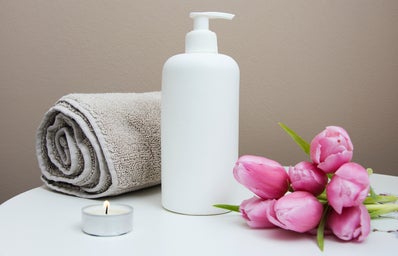It wasn’t until college when I realized the effect that the media had on my personal opinion of myself. I grew up in an age where every woman who was featured in a magazine, TV show, or movie all appeared to look the same. As a child it was impossible to walk through a magazine aisle without seeing women photoshopped to perfection. The media had created one type of “ideal beauty” and if you weren’t light-skinned and thin with luscious hair, you weren’t considered beautiful.
This kind of environment is detrimental to all children growing up. When you’re fourteen and obsessed with what everybody thinks of you, seeing women edited to look flawless can cause you to develop hatred towards your own body. When you’re this age, it doesn’t even occur to you that the women who are plastered all over magazine covers look nothing like the final product. Even as you grow up and realize how fake these photographs are, the idea that you aren’t the right type of beautiful has already become a part of your subconscious. Since the age of technology, there has been increased research of how influential media is to body perception. According to the West Virginia Dept. of Education and Rader Programs:
· “Adolescent girls are more afraid of gaining weight than getting cancer, losing their parents or nuclear war” (Rader Programs).
· “81% of ten-year-old girls experience a fear of being fat” (Rader Programs).
· “Some 90% of those with eating disorders are adolescent and young women” (West Virginia Dept. of Education).
· “The average American woman is 5’4” tall and weighs 140 pounds. The average American model is 5’11” and weighs 117 pounds” (West Virginia Dept. of Education).
· “One study showed that 75% of women consider themselves overweight when, in reality, only 25% were” (Rader Programs).
· “A study showed that women experience an average of 13 negative thoughts about their body each day” (Rader Programs).
Even with the growing research about how harmful this idea of an “ideal beauty” is, the media is still continuing to set an unattainable standard for beauty. Every day women and girls alike are exposed to hundreds or thousands of photos online and in real life conveying to them that what they look like is not considered beautiful to society. This type of media is teaching multiple generations of women that it is more important to be somebody else’s idea of beauty than their own.
But there has been progress in changing perceptions. Increasing instances of celebrities promoting unedited photos of themselves instead of photo-shopped pictures is helping create a movement celebrating the idea that nobody is without flaws.
And recently magazines have been increasingly celebrating a myriad beauty types instead of just one “ideal beauty.” Lupita Nyong’o was just recently named “People’s most beautiful person of 2014” and with this announcement, she has officially become the third black woman to hold the coveted title. The reason why this is so important to realize is because Lupita represents a type of beauty that has been unrecognized for so long. “It was exciting and just a major, major compliment. I was happy for all the girls who would see me on it and feel a little more seen,” Lupita said in her People article.
So I applaud People Magazine for moving away from this limited view of beauty the world seems so desperate to hold on to. But the problem still remains and it is time for the rest of the world to move forward. No longer can we allow for our children to think there is only one type of beautiful in the world. We need to call out the media, call out those who are perpetuating this “ideal beauty” that is so debilitating. There can be no more excuses; it’s time the idea of beauty to belong to the many and not the few.


